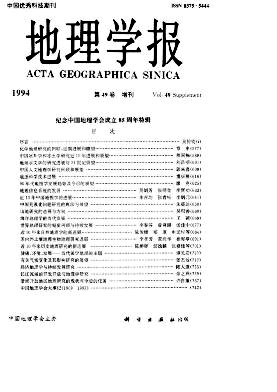Pan Dingan, Wang Siming, Shen Huanting
Meizhou Bay is located on the coast of Fujian Province. There are many peninsalus, capes and islands. The submarine relief is more complicated. The Central Deep Channel is not only wide but also deep. The Central Deep Channel has three sections,which are the south sections, middle section and north section. Shoals usually develop along the coast or around the islands. Beiniu Sands is located in the zone where the south section and the middle section are connected in the Central Deep Channel. Tidal current is a major force to mould the submarine relief in the Meizhou Bay. To reveal the dynamic mechanism of the formation of deep channels and shoals, a numerical simulation of the flow field in Meizhou Bay is applied in this paper. The numerical model adopts Jan J. Leendertse’s geostrophic nonlinearity two-dimension flow field model. It is one of the major bases to analysis the formation of the Central Deep Channel and the Beiniu Sands. There are four-group peninsulas and islands in the Meizhou Bay, which can narrow the bay and control current action. The link line between the four-group peninsulas and the islands is a boundary line between the Central Deep Channel and the shoals. The major dynamics moulding the deep channel at the upper stream of the south section of the Central Deep Channel is the flood current. it belongs to the flood channel. At the lower stream the channel is moulded by ebb current, and it is an ebb channel. The middle section of the central Deep Channel is domained by ebb current, which is the major dynamics to mould the deep channel which is belongs to the ebb channel. At the north section of the Central Deep Channel. the major dynamics on the north shore is the flood current, and it is the ebb current which moulds the south shore. Thus,the evolution processes of the Central Deep Channel are different at various reaches. the dynamic mechanism can be divided mainly into three kinds including flood. ebb currents and combination of the two. In the Beiniu Sands area. there are a slow flood flow and a slow ebb flow. Therefore, the dynamics of the ebb flow is weaker. It is a place for sediments to be accumulated. which forms the basic conditions for the Beiniu Sands to form. The Beiniu Sands is located in the zone between the south and the middle sections of the Central Deet1 Channel.The dynamics in the deep channel of the south section is mainly the flood current.It extended in the direction of NW. The dynamics at the middle section is mainly the ebb current which stretches in the direction of SE. Althrough the trends of the two deep channels moulded by flood and ebb currents are the same, their locations are different. There are shoals between the two channels. Isobath 10 m at the SE of the Beiniu Sands is faraway from the islands, The ebb current is resisted in the middle section of the Centra1 Deep Channel which makes part of the Beiniu Sands like a spit.The flood current at the upper stream of the south section of the Central Deep Channel erodes the Sands. The isobath 5rn between the Beiniu Sands and the coastline is far away from the shore due to erosion. Therefore, the area where the depth is less than 5 m becomes a zonal isolated accumulation body. The returned current in the bay rounds the Beiniu Sands during the turning of tidal current, its duration is about 0.5-1hour. Sediments can be deposited on the shoals under the action of the returned current which is favourable to the evolution of the Beiniu Sands. The place with intensive sediment deposition is at the centre of the returned current.The head of the Beiniu Sands is always silting within 36 year, and the depth at the head of the sands decreased from 1.1m-0.3m since l954.The formation of the Beiniu Sands is n1ore complicated, and its evolution model is different from those in other places.
